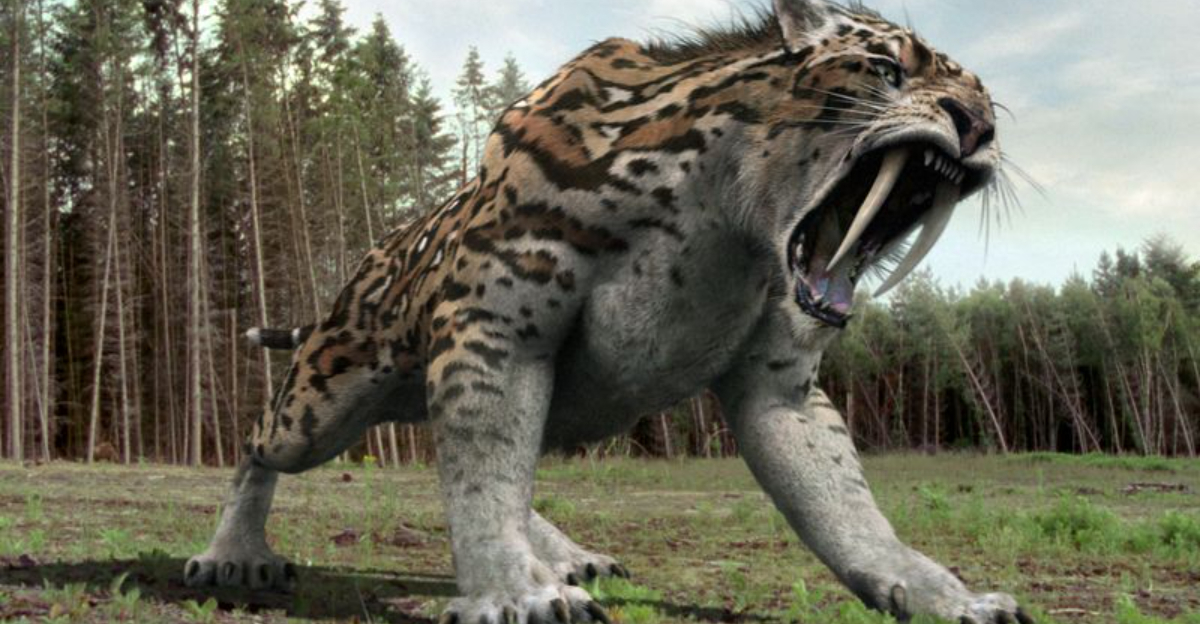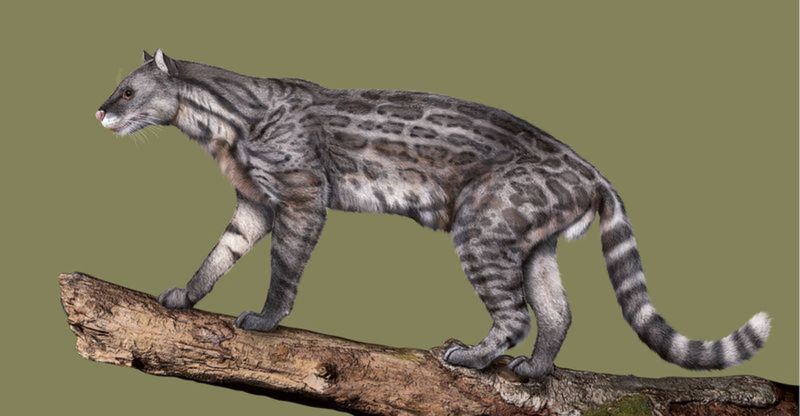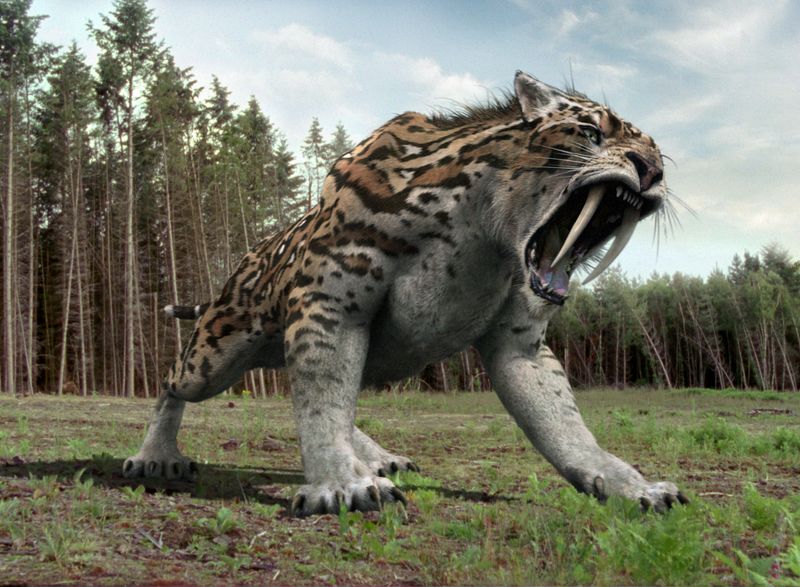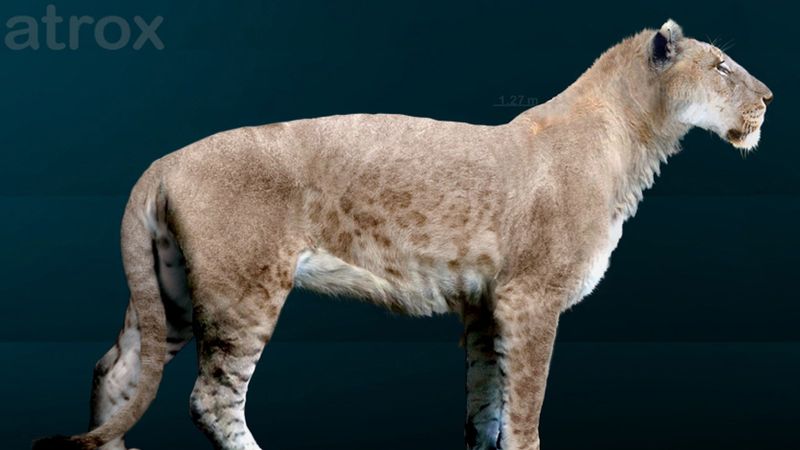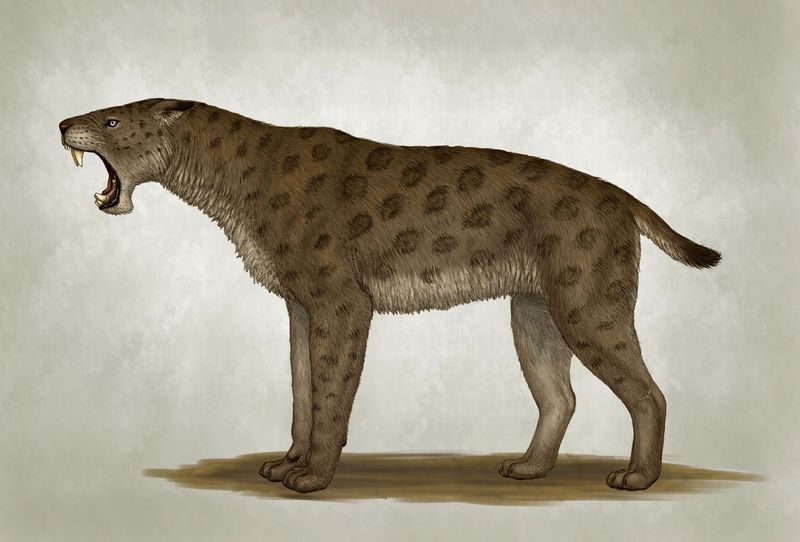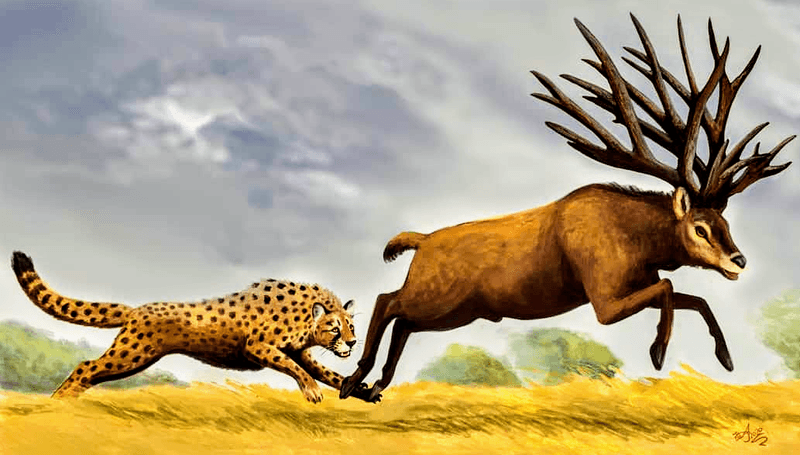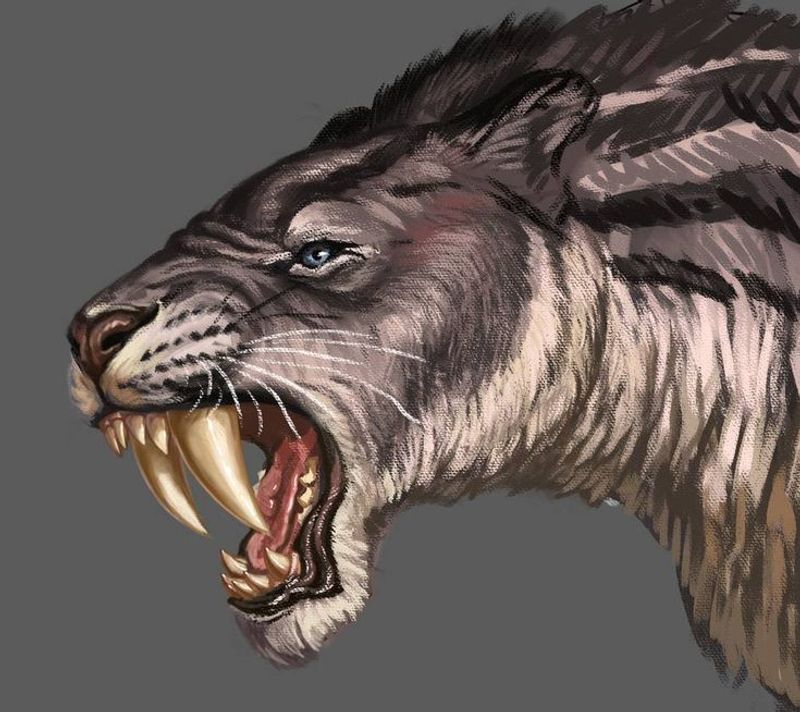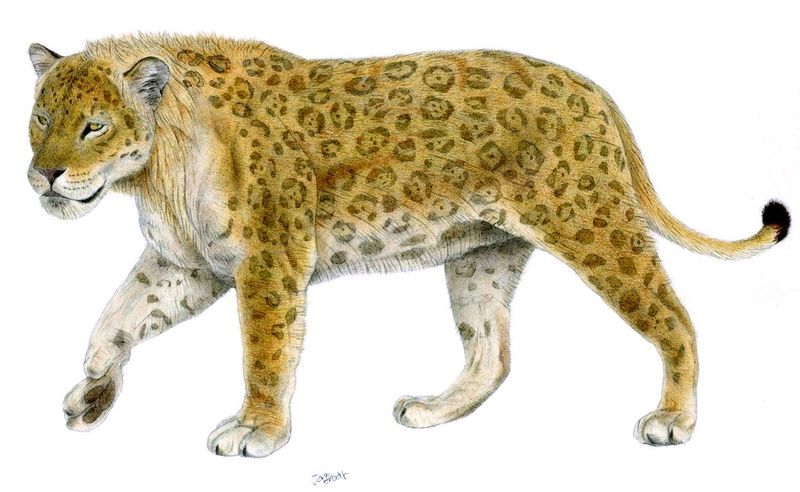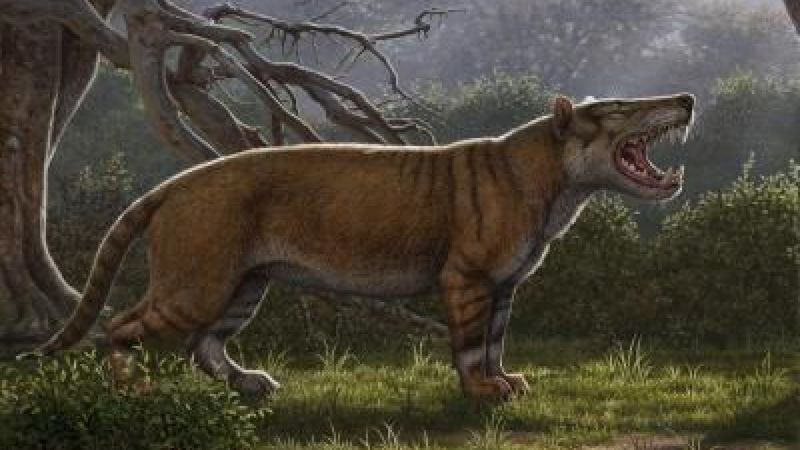📖 Table of Content:
Long before modern lions and tigers ruled the wild, their ancient ancestors prowled prehistoric landscapes as dominant hunters. In this post, we explore 8 remarkable ancient cat species that once sat at the top of the food chain. From the saber-toothed Smilodon to lesser-known yet fearsome feline predators, these apex cats shaped ecosystems and earned their place in evolutionary history. Discover how they lived, hunted, and ultimately disappeared—leaving behind fossilized clues and a legacy of power that still fascinates scientists today.
1. Proailurus
Proailurus, often hailed as the first true cat, prowled the Earth around 30 million years ago during the Oligocene epoch. It possessed distinct feline features like retractable claws and specialized teeth, ideal for shearing meat. Picture this ancient predator navigating the dense forests, honing its skills in hunting small mammals and birds. Its presence marked a significant evolutionary step towards modern felines, setting the stage for the diverse cat family we recognize today. Despite its size, Proailurus was a formidable hunter, adept at ambushing unsuspecting prey with stealth and precision.
2. Smilodon
Known as the saber-toothed tiger, Smilodon roamed during the Pleistocene epoch, capturing imaginations with its impressive, elongated canine teeth. These formidable tools were used to ambush large prey like mammoths and ground sloths. Its robust limbs and powerful build made it a master of stealth and surprise. The coexistence of Smilodon with early humans is a fascinating aspect of prehistoric life, depicted in ancient art. Despite its extinction, Smilodon’s legacy endures, symbolizing the fierce beauty and power of ancient predators. Its image remains iconic in the annals of natural history.
3. Cave Lion (Panthera spelaea)
The Cave Lion, a magnificent subspecies of lion, reigned across Europe, Asia, and North America during the Ice Age. Larger than its modern relatives, it adapted to the cold climates of the time. Imagine this regal beast depicted in ancient cave paintings, reflecting its significance to early human societies. Its interaction with humans adds a layer of intrigue to its legacy. The Cave Lion’s impressive stature and adaptability made it an apex predator capable of thriving in harsh environments. Its story is etched in the frozen landscapes it once dominated.
4. Homotherium
Homotherium, the scimitar-toothed cat, stood out with its shorter, serrated canine teeth and longer hind limbs. This unique anatomy made it highly efficient in chasing down prey across various terrains. Its widespread presence spanned continents, from the sub-Arctic tundra to African savannahs. Imagine the thrill of this cat’s pursuit, its agility unmatched in the animal kingdom. Homotherium’s ability to adapt to different environments showcases the evolutionary prowess of ancient cats. It remains a symbol of resilience and versatility, thriving in diverse and challenging habitats.
5. Giant Cheetah (Acinonyx pardinensis)
The Giant Cheetah, an impressive relative of today’s fastest land animal, thrived during the Pliocene and Pleistocene epochs. Imagine a cheetah, but larger and more powerful, capable of taking down bigger prey. Weighing between 120-150 kg, it roamed the vast terrains of Europe and Asia. Its speed and strength were legendary, a testament to nature’s drive for adaptation and survival. Despite its extinction, the Giant Cheetah’s legacy lingers, reminding us of a time when speed reigned supreme among predators. Its story is that of evolution’s relentless pursuit of perfection.
6. Xenosmilus
Xenosmilus, a robust predator with uniquely serrated teeth, carved its niche as a fearsome hunter in prehistoric North America. Unlike typical saber-toothed cats, its shorter, thicker canines inflicted deep, brutal wounds on its prey. Weighing between 180-230 kg, Xenosmilus was adept at overpowering large herbivores. Picture this mighty cat prowling the ancient landscapes, its presence a testament to the diverse adaptations of feline predators. Its build and hunting strategy reflect evolution’s innovation, a powerful reminder of the dynamic history of life on Earth.
7. European Jaguar (Panthera gombaszoegensis)
The European Jaguar, distinct from its modern counterpart, was a formidable predator of its time, roaming Europe about 1.5 million years ago. Imagine a jaguar, but larger, weighing up to 210 kg, ruling the dense European forests. Its powerful build and stealth made it a top predator, embodying the untamed spirit of ancient Europe. The European Jaguar’s existence underscores the diverse evolutionary paths taken by big cats in adapting to their environments. Its legacy is one of power and dominance, etched in the annals of prehistoric wildlife.
8. Simbakubwa kutokaafrika
Simbakubwa kutokaafrika, discovered in Kenya, stands out as a colossal predator, with a skull size rivaling that of a rhinoceros. Imagine this giant prowling the African plains around 22 million years ago, a solitary hunter of unmatched prowess. Its sheer size and power symbolize the incredible diversity of prehistoric predators. Simbakubwa’s discovery adds a fascinating chapter to our understanding of ancient ecosystems, highlighting the dynamic and competitive nature of life long before modern big cats emerged. Its story is one of awe and wonder, a glimpse into a bygone era.
